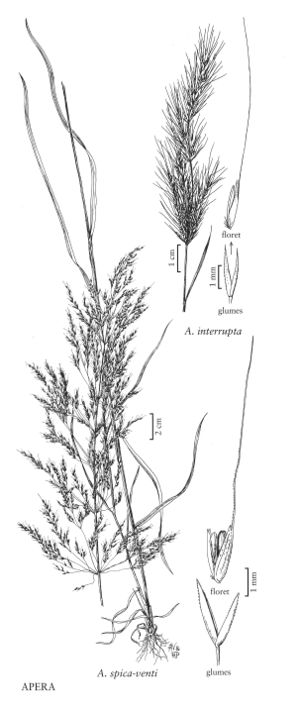Apera spica-venti
Culms 20-80 (120) cm, stout, usually with several shoots, sparingly branched; internodes shorter or longer than the sheaths. Sheaths often purplish; ligules 3-6 (12) mm; blades usually 6-16 (25) cm long, 2-5 (10) mm wide, flat. Panicles (5) 10-35 cm long, (2) 3-15 cm wide, usually open, pyramidal; branches spreading, naked at the base for 5+ mm, with spikelets usually borne towards the distal ends; pedicels 1-3 mm. Spikelets 2.4-3.2 mm, often purplish; rachillas prolonged for about 0.5 mm. Lower glumes 1.5-2.5 mm; upper glumes 2.4-3.2 mm; lemmas 1.6-3 mm, folded, scabridulous above midlength, awned, awns 5-12 mm; anthers 1-2 mm, greenish to yellowish, often purple-tinged. Caryopses 1-1.5 mm. 2n = 14.
Discussion
Apera spica-venti grows as a weed in lawns, waste places, grain fields, sandy ground, and roadsides. Introduced from Europe, it is found in scattered locations in the Flora region.
Selected References
None.
Lower Taxa
"decumbent" is not a number.
